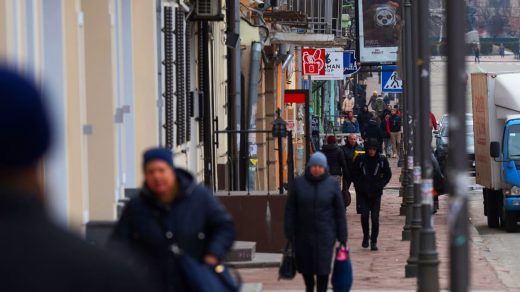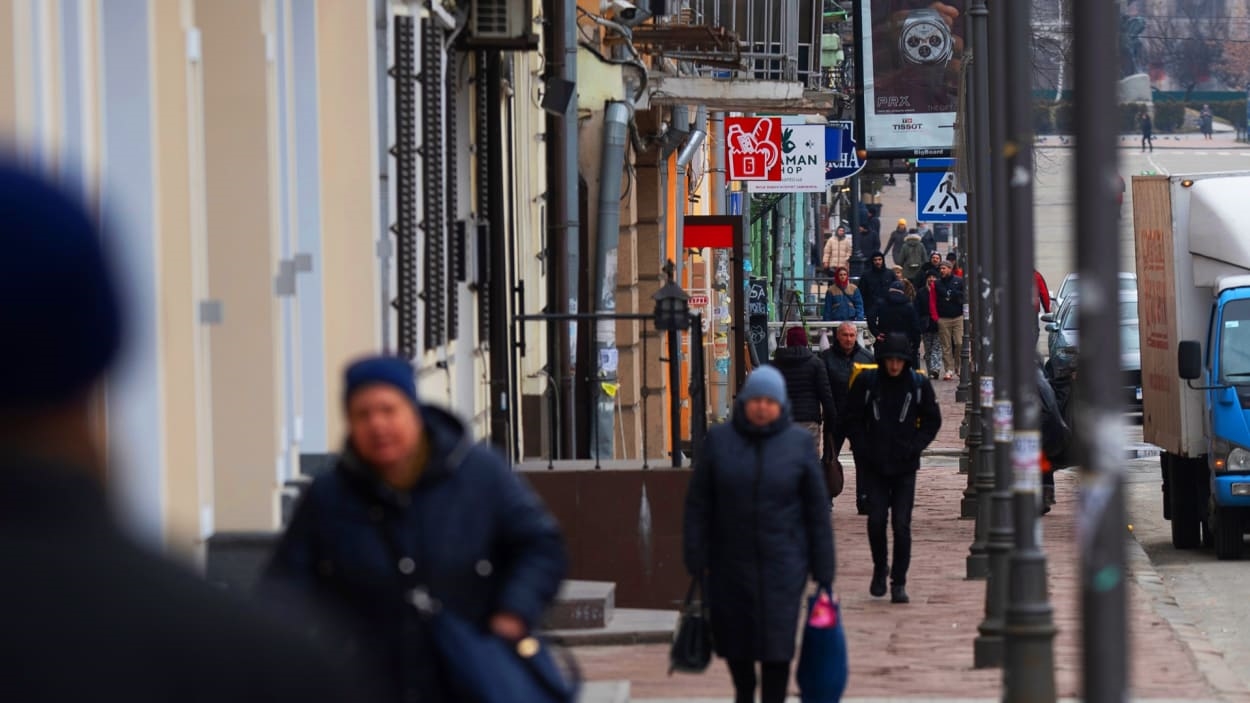New data paints a picture of a year of war in Ukraine
There are lots of ways to tell the story of Ukraine over the past year. There are the stories of its military victories and losses, of territories seized, defended, and destroyed. There are the stories of its people, those who have scattered to all parts of the world, those who have died, and those who have been left behind to fight. There are the stories of its leaders, who have won over international allies with their defiance of Russia and pleas for support.
Mark Polyak is trying to tell Ukraine’s story through its data. Using techniques developed for studying disaster areas, Polyak, who is president of analytics at the market research firm Ipsos, has been tracking the narratives that emerge from remote sensing technology, like radar and cell phone data, to provide a high-level view of what life has been like on the ground over the past year.
Polyak says his goal is to develop “a large-scale understanding of the impact of the war on the country, beyond anecdotal evidence,” which can help governments, NGOs, and other Ipsos clients prepare for reconstruction when the time comes.
The data, some of which is outlined below, illustrates the scope of loss Ukraine has faced, but also paints a picture of a country whose people have shown a stunning resilience. Even in these otherwise impersonal numbers, Polyak says, it’s clear Ukrainians have “a very strong desire to truly, truly come back.”
Family ties break and mend
Polyak used location data from 60 million anonymized cell phones—just over 60% of all cell phones in Ukraine—to track mobility patterns throughout the country. This data shows the extent to which life came to a standstill when Russia’s full-scale invasion began last February.
The data shows how the number of visits people made outside their homes changed over time, compared to prewar times. In early January 2022, before the full-scale invasion, mobility trended downward, likely due to people enjoying the holidays inside their homes. Later in the month, and through February, it ticked back up, as people returned to work. Once Russia invaded in late February, the lines charting mobility in the country turned sharply downward, indicating that people all across Ukraine were sheltering. “The Russians start bombing, and look at this: People are just basically staying inside their homes,” Polyak says.
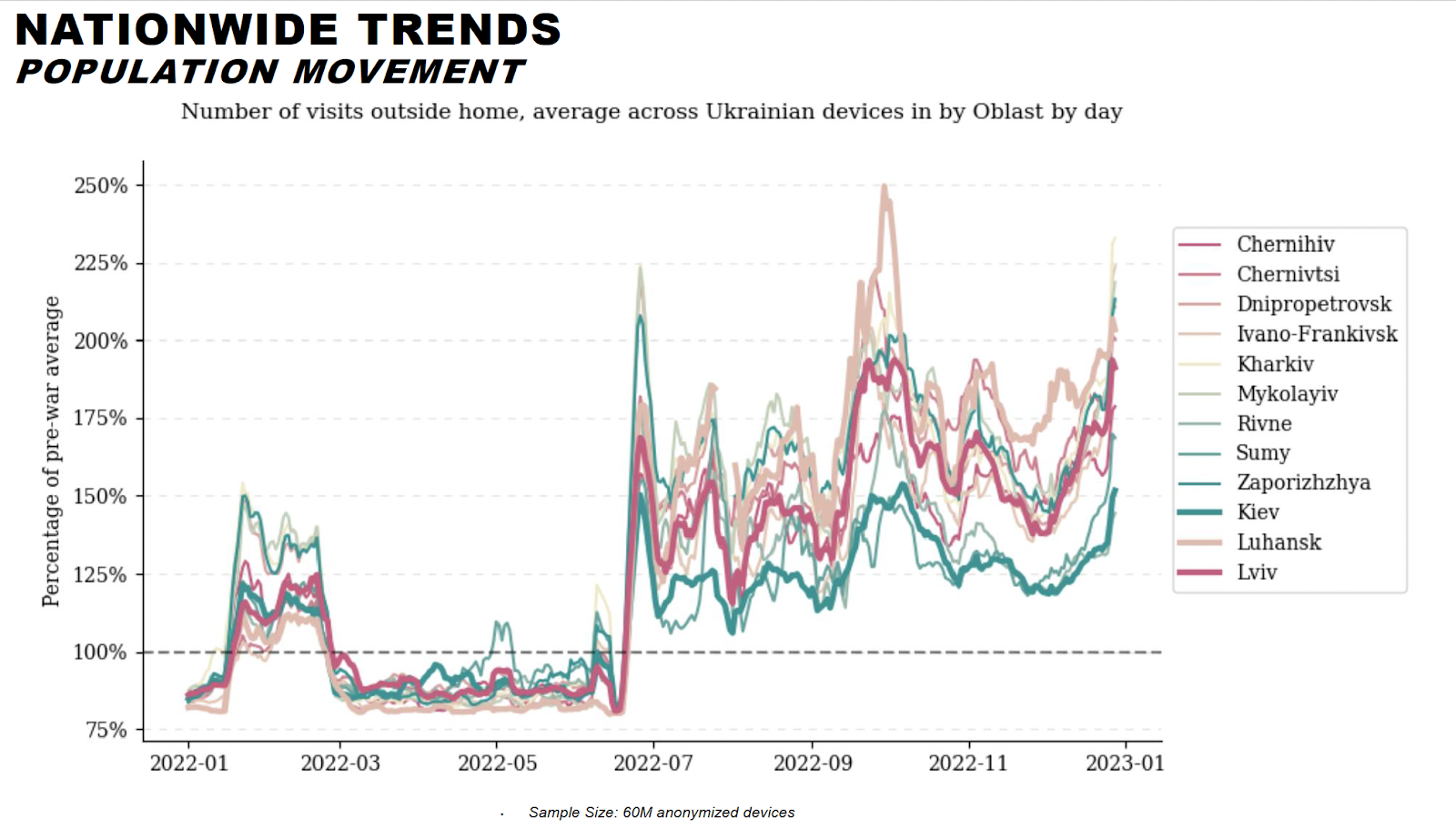
Polyak took a closer look at people’s repeated visits to residences other than their homes, which he used to approximate the ties between families, friends, and other close connections. He says those patterns were significantly disrupted by February 2022, with an 80% drop in visits at the beginning of the war. “You can literally see the entire fabric of life completely destroyed,” he says. These visits continued to be down around 65% from their prewar rate until July, when a major speech by President Volodymyr Zelenskyy on Ukrainian Statehood Day brought people together again.
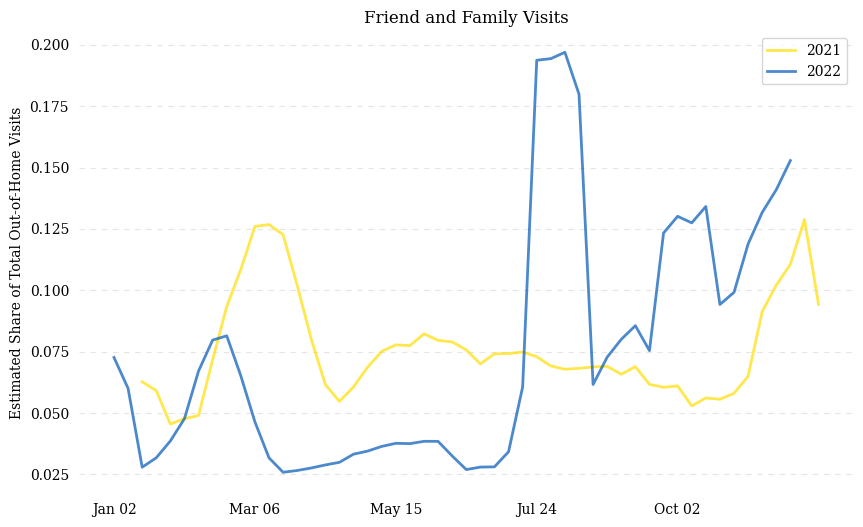
And yet, Polyak says, this mobility data shows some hopeful signs too. Unlike in other disaster areas where he’s tracked the flows of refugees out of a country, in Ukraine, he says he’s seen a “yo-yo effect”: Many of those who leave are then returning as soon as it seems safe to do so. That and the flow of refugees out of the country contribute to the fact that mobility since July of last year has been higher than it was before the war began, Polyak says.
“People may go to Poland, then things will get better in that particular area, and three days later, these people will come back,” Polyak says, predicting that the pattern has a lot to do with the conscription of men into the Ukrainian military. “You have a very unique refugee situation, where entire families are fragmented,” he says. “Families want to come back together as fast as they can.”
Retail traffic returns
Cell phone mobility data also shows a return of Ukraine’s retail sector. Polyak studied foot traffic patterns to nearly nine million stores across the country over the course of the year. Unsurprisingly, given the dramatic decrease in people even leaving their homes between March and July of last year, trips to stores also declined significantly during that time. But since then, retail traffic—though not spending—has crept back up to around where it was before the war began.
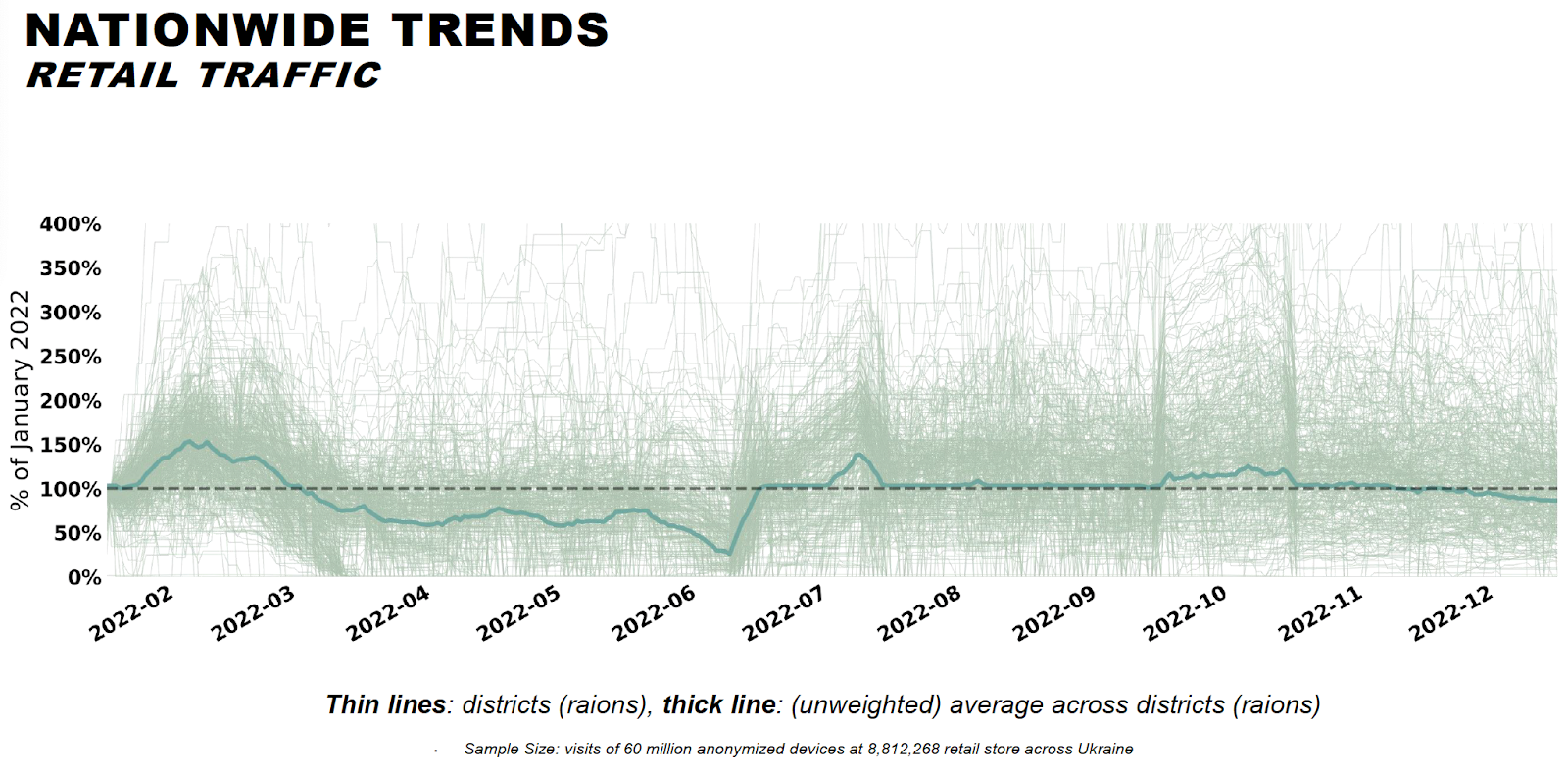
“What we know, anecdotally, is people are spending less but people are going into stores more,” Polyak says. That’s no surprise, given the dire situation Ukraine’s economy is in, and the pressure that has put on the average Ukrainian family. A survey conducted last year by the European Commission and Gradus Research found that 73% of Ukrainians say they’ve lost income since the war began.
Infrastructure falters
The depth of destruction in Ukraine’s fundamental infrastructure also comes through in its data. The degree of loss in Kherson alone—which was among the first cities to fall to the Russians last year and which remained under Russian control for eight months—is staggering.
After the Russians took over Kherson in early March 2022, radar technology shows a steep drop in access to electricity in the city. It continued to drop between 30% and 60% during the course of the occupation. It rose just slightly, as the Russians attempted to fix the infrastructure they had broken. But by last November, as Ukraine was retaking the city, Kherson descended into a complete blackout. “As they’re about to be kicked out, they take everything down,” Polyak said of the Russian army. “They destroy all the power generators, and then power goes completely dead.”
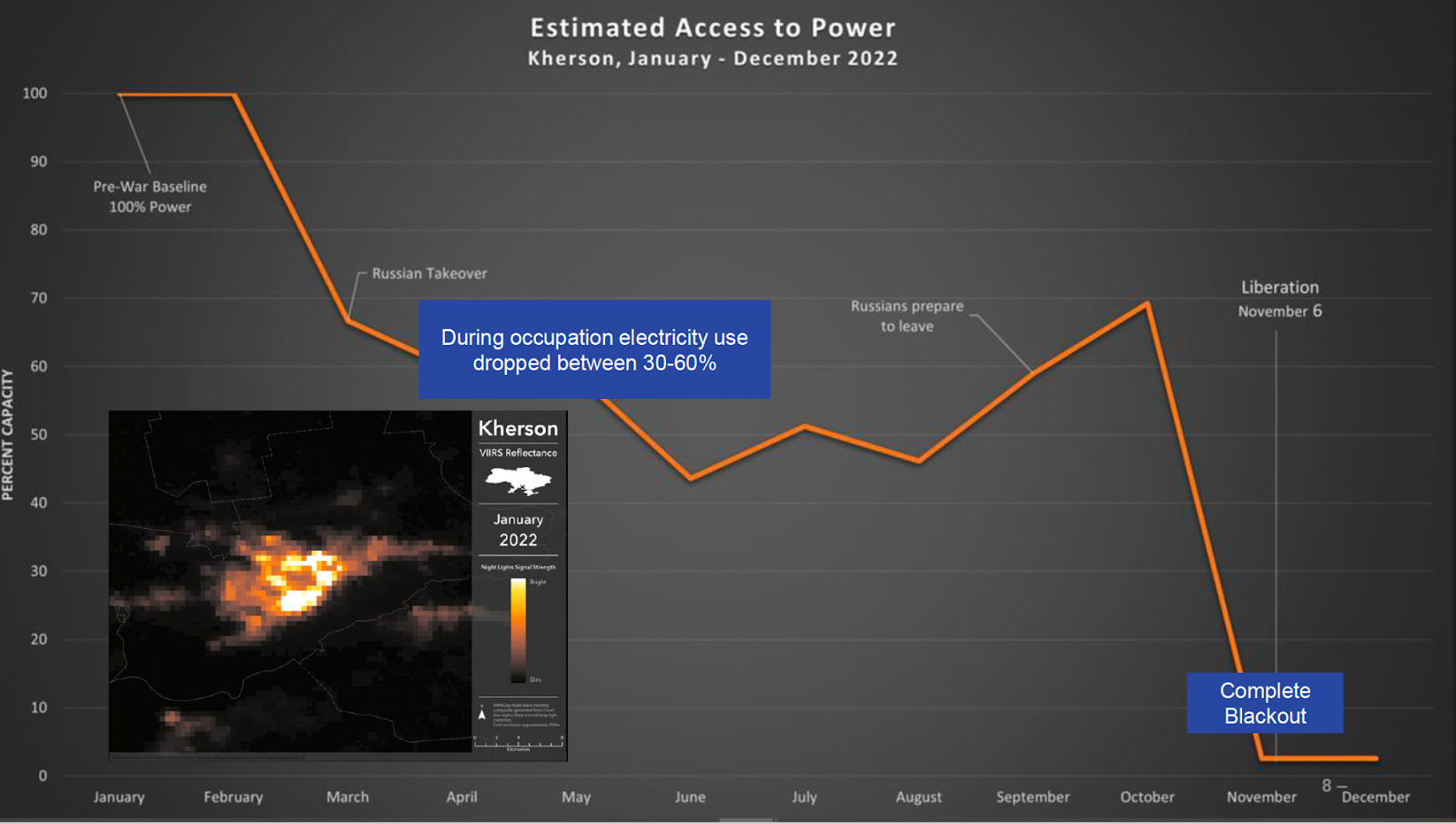
The people of Kherson, which is now left with just a fifth of its prewar population, are still being terrorized by Kremlin forces, even from afar, with Russian attacks continuing to level maternity wards, children’s hospitals, museums, and civilians’ homes.
Air alerts save lives
Polyak has also used these data sets to estimate how many lives have been saved by Ukraine’s air raid alert app. For this analysis, which has not yet been published, Polyak joined with two other researchers—David Van Dijcke, a PhD student at the University of Michigan, and Austin Wright, an assistant professor at the University of Chicago—to figure out how far people actually moved in response to air raid alerts and how those responses were changing over time.
To study those response patterns, the researchers scraped alert data from the app and compared it to both cell phone mobility data and local reports on casualties following Russian air raids. They found that in the early days of the war, people traveled around 1.5 miles within 10 minutes of an alert. But as the months wore on, and people developed what the researchers called “alert fatigue,” they moved shorter and shorter distances.
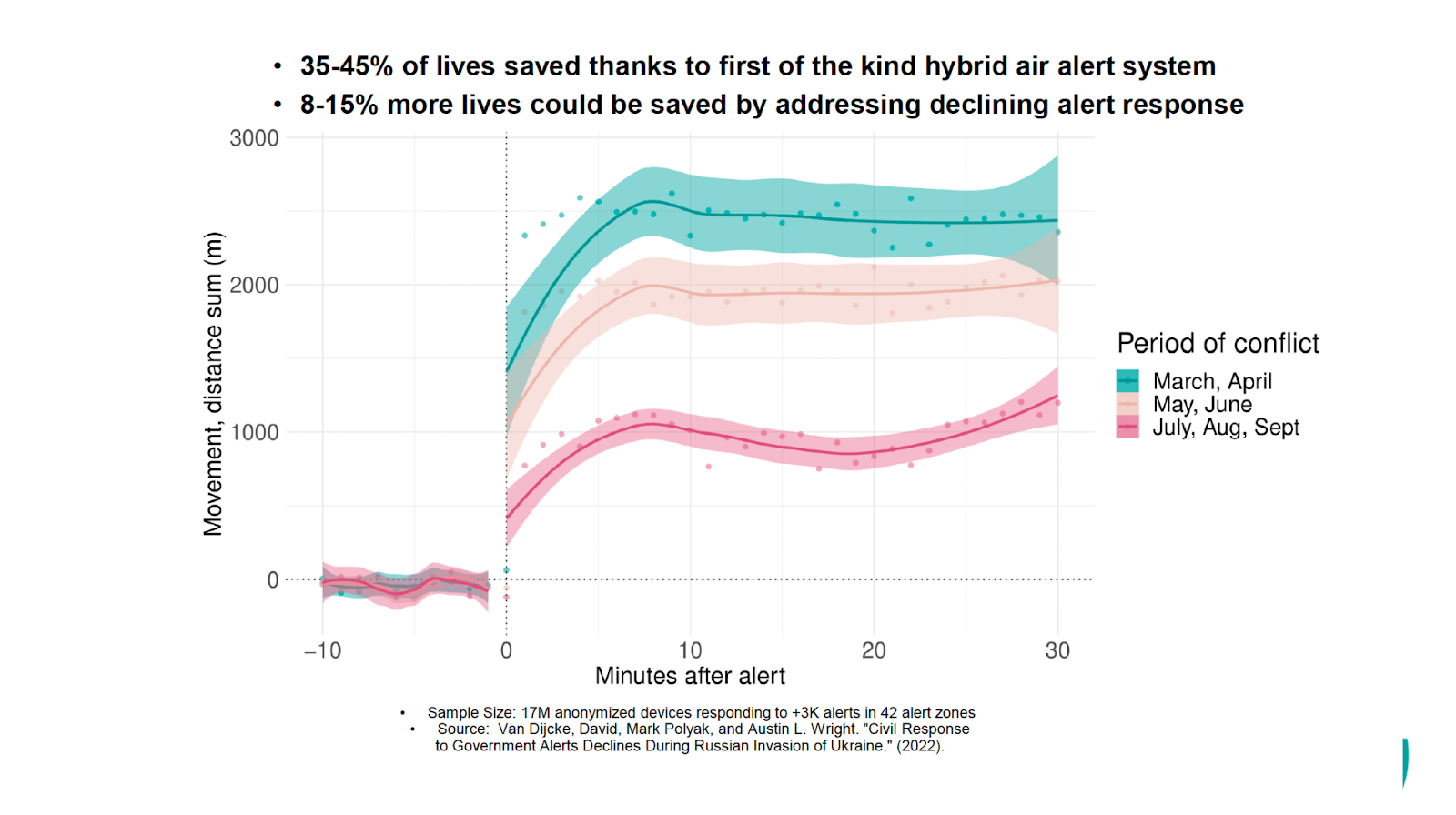
The results suggested that the air raid alerts were making a meaningful dent in saving lives, but that even more lives could be saved if people paid more attention to them as the war went on. The researchers found that targeted messaging from the government, coupled with these alerts, increased people’s responsiveness, suggesting a possible course of action for Ukraine’s leaders going forward.
The goal of all of this information is to help Ukraine chart a path forward in what will be the biggest rebuilding undertaking since World War II. “This is really to assist in potential reconstruction,” Polyak says. “To understand: What can be done better? What can be repaired?”
(24)

